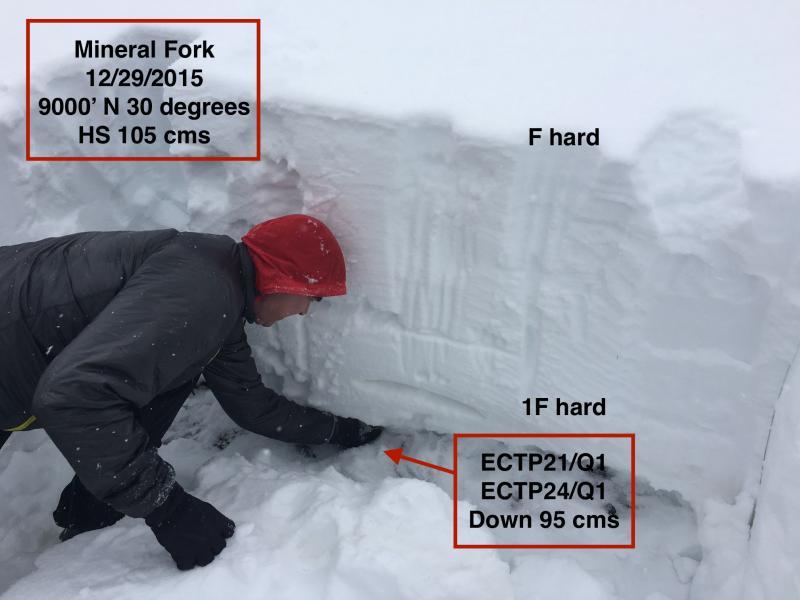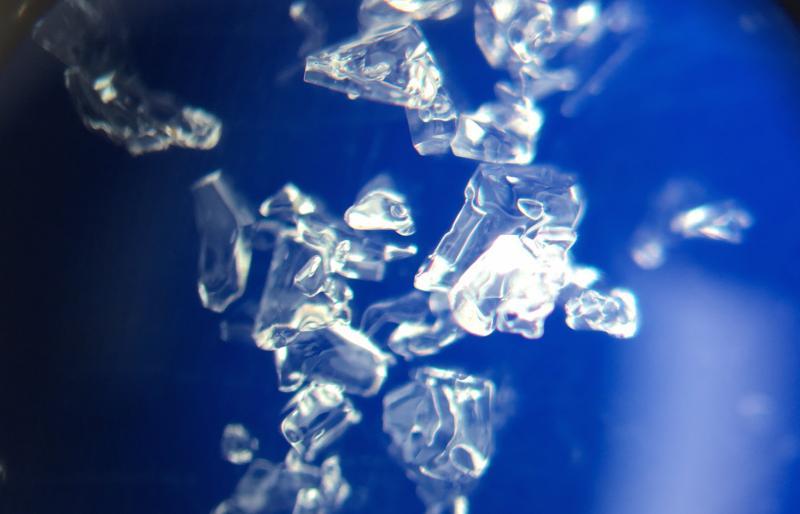Touring today in mid elevations in Mineral Fork. Few in-your-face signs of instability. No collapsing or cracking, no recent avalanching since last cycle, no wind loading. General feeling is snowpack is showing signs of strengthening. However, on one pit on a north-facing aspect at 9000' on a 30 degree slope, we got an ECTP21/Q1. We repeated the test and scored ECTP24/Q1. In both instances the failure was in faceted snow down 1 meter at the ground.
This is classic deep slab instability. In other pits the last several days I have been unable to get an ECT to propagate, but on this slope the column did propagate. To me this is an indication that if you hit the right spot on a slope, it is possible to collapse the weak layer down near the ground and have the fracture propagate across the slope. But you have to hit the right spot.
Also worth noting interpreting these results is what I refer to as having "glass is half empty" view of the snowpack. If this is the only pit that shows instability, I pay far more attention to this pit than 20 others.
In this photo one of my touring partners today (Tom Flaherty) is examining the faceted snow down at the ground. Overall we are seeing signs of this layer gaining strength, with some rounding of the facets. The grains were also somewhat damp and you were able to begin to make them into a snowball. But this process takes time.


I think today's forecast of a Moderate hazard is the right call. I think most slopes are stable, but from our pit results today, if you hit the sweet spot, large avalanches remain possible.
Fortunate to travel with such a strong team today (Erme Catino, Tom Flaherty, and Chino Rodriguez). No human factor issues going on - full propagation on ECT told us deep slab instability issues remain and we planned the remainder of our route accordingly.






